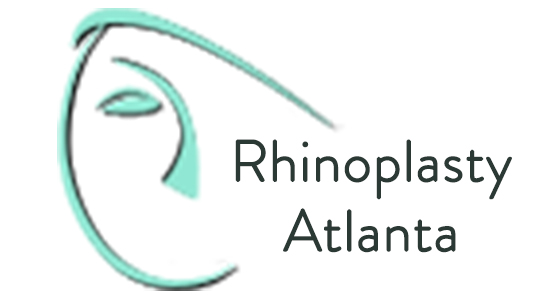Trauma involving the nasal bone and nasal septum can result in the collapse of the supporting framework of the nose thus resulting in the collapse of the nasal bridge. This is known as Saddle Nose.
Saddle Nose deformity is not only an aesthetic problem but also a functional issue. Often, Saddle Nose can result in nasal airway obstruction because of internal nasal valve collapse, severe septal deviation, or a combination of both. Repair of Saddle Nose deformity should be addressed by an expert Rhinoplasty specialist. Dr. Peter Abramson and his team of experts at Rhinoplasty Atlanta can skillfully reconstruct a Saddle Nose using the most up-to-date techniques available today. A spreader graft is a pair of straight pieces of cartilage which are sutured on each side of the nasal septum to reinforce and to keep straight the nasal septum and the nasal bridge. A spreader graft will not only straighten the nose but will also open a narrow internal nasal valve, which will in effect open up the nasal airway. A spreader graft Rhinoplasty is performed either via an open Rhinoplasty or closed Rhinoplasty approach. Saddle Nose Deformity can also be camouflaged with injection of skin fillers into the dent on the nasal bridge. This is the Non-Surgical repair of Saddle Nose deformity. Saddle Nose deformity is a pathological entity resulting from loss of dorsal height, caused by a substantial decrease in the support structures of the nose. This can include either the cartilaginous vault and/or the bony vault.
There are several features that are characteristic of Saddle Nose deformity:
1) Visible or palpable depression of the nasal bridge
2) Severe loss of tip support
3) Columella retrusion (nasal base skin between the nostrils)
4) Shortened vertical length of the nose
5) Overly rotated nasal tip (i.e., pug-nose appearance)
Irrespective of the cause, the central underlying defect is lost integrity of the nasal bones and cartilage along the bridge resulting in a short nose with compromised support.
The majority of Saddle Nose deformities are acquired as a result of trauma, untreated septal bleed/hematoma, previous surgery to correct traumatic injuries, cocaine abuse, infection, and cosmetic nasal surgery). Although it is difficult to assess the true prevalence of nasal saddling in any given population, certain groups of patients seem to be particularly prone. Facial trauma victims, cocaine abusers and patients who have undergone previous septorhinoplasty, particularly following traumatic injury, seem to be at highest risk. The patient shown above required nasal reconstruction with rib grafts, ear cartilage composite grafts, and deep temporal fascia grafts in order to correct her myriad of problems.
Rhinoplasty Atlanta uses innovative, state-of-the-art techniques and instruments to perform a variety of Rhinoplasty and aesthetic procedures for patients throughout the Metro Atlanta, GA area including Alpharetta, Roswell, Sandy Springs, Marietta, and Johns Creek. Call 404/297-1789 today to schedule a personal consultation with Dr. Abramson to determine if Rhinoplasty is right for you.
